When it comes to maximizing the potential of a roof, people often think of either including skylights or photovoltaic (PV) panels. However, it is becoming more and more popular to do both, leading to those in residential and commercial spaces enjoying both the benefits of daylighting and higher energy performance.
The benefits of skylights sharing available roof space with PV panels are numerous. Skylights have long been tied to personal health and wellness benefits, thanks to daylighting and ventilation. Naturally generated daylight also reduces the energy load needed for electric illumination. When combining these perks with PV panels’ ability to convert thermal energy into electricity, a higher-performing building really can start with its roof, whether the space is residential or commercial.
Mike Rhoden, member of the Fenestration and Glazing Industry Alliance (FGIA) Skylight/Sloped Glazing Council and Regulatory Compliance Manager at VELUX, shared examples of skylights and PV panels co-existing in both residential and commercial applications. The two features can not only be installed on a single roof, but they can be positioned in such a way that they appear to be congruent with one another. Their inclusion in one space can help builders maximize a roof in a new way. Plus, read on for new information about tax credits for both products, including cutting down the cost of installation.
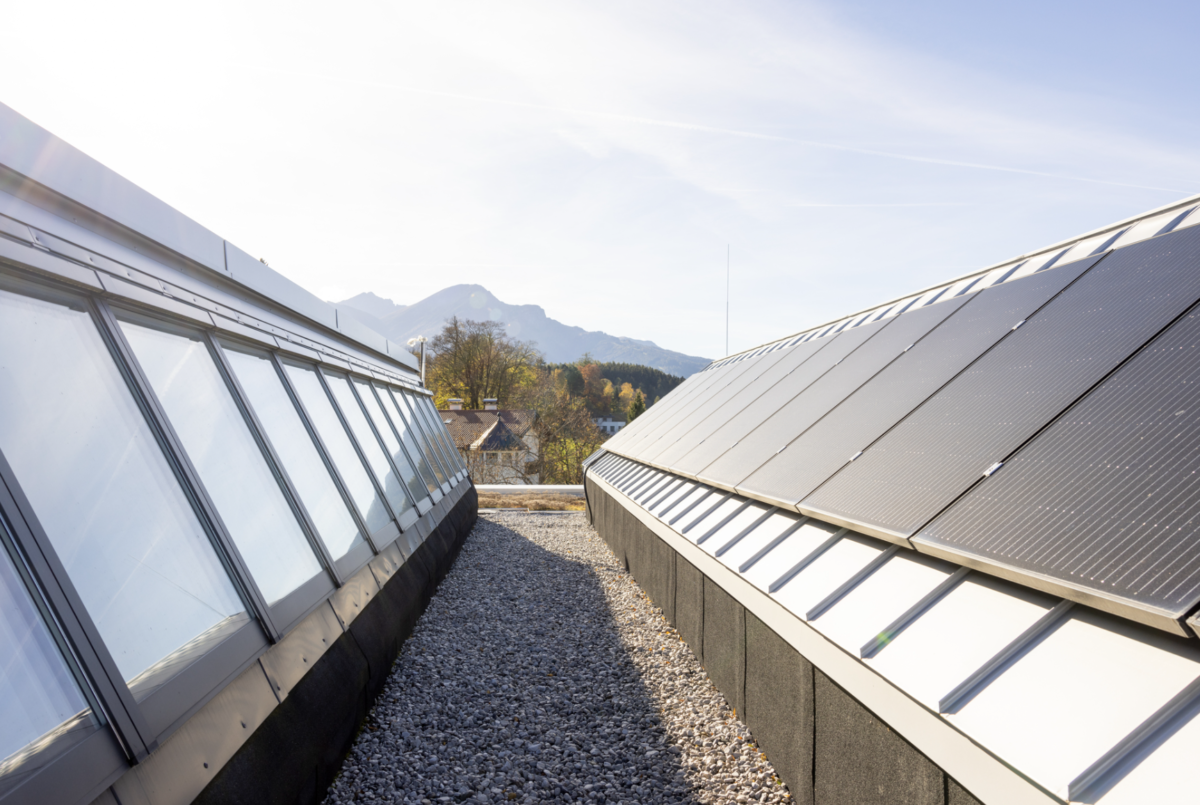
Bringing in Fresh Air
For a home to be energy efficient, it makes sense that it needs to be sealed tightly to minimize air infiltration, except through an open door or window. However, indoor air can become stale. Incorporating operable skylights, along with windows, helps combat stale air by allowing new air to recycle throughout the home via the “stack effect,” which draws fresh air from lower vertical windows while exhausting indoor stale air through the skylights. Kitchens and bathrooms in particular need their air recycled frequently, as moisture can build up from cooking and bathing. Installing venting skylights in these rooms can help contribute to the freshness and overall health of the entire home. This can be applied to multi-family applications, as well.
Can Roofs Handle Both Skylights and PV Panels?
Metal roofs are an especially strong platform on which to integrate both PV and skylights, although it is important to note the roof’s pitch or slope. Standing-seam roofs, however, are becoming more common in single-family construction and retrofit today, especially because standing-seam roofs are easily paired with PV panels.
The work of German high-performance home design-builder Johannes Schworer focuses on near-net-zero residences. Schworer’s work shows that window size and placement versus sheer volume are critical in delivering deeper penetrating daylight. That said, roof slope matters. When a skylight is correctly integrated into a steep slope roof, it can maximize performance. In the case of one Schworer home, when harvesting at a 35-degree solar angle, the skylight delivered 222 lumens — double other similar options. Additionally, the angled skylight delivered a greater daylight factor (DF), or the ratio of the light level inside a structure to the light level outside the structure, at roughly a half a meter distance, penetrating significantly wide and deep into the space. Plus, on this Schworer home, the skylight was surrounded by PV panels. Commercial roofs enjoy the benefit of having a large space to work with, offering many options for configurations for installing both skylights and PV panels.
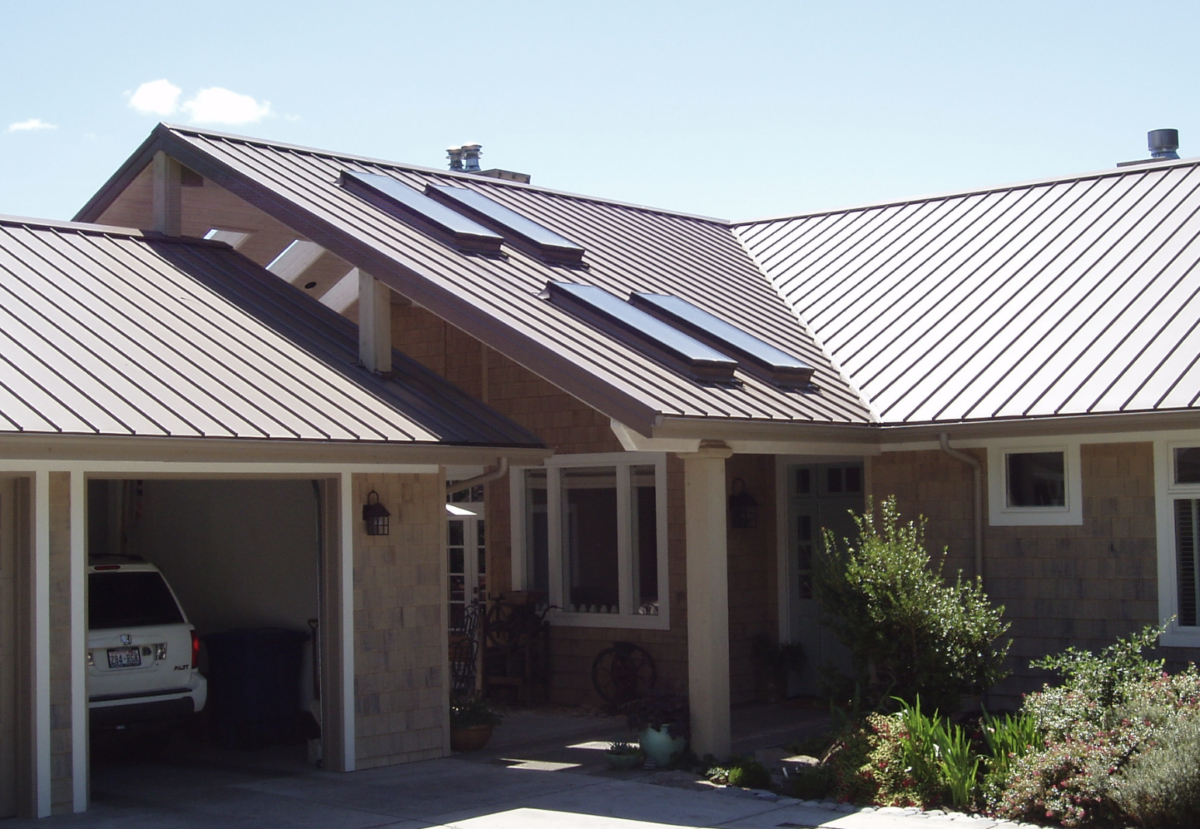
Installation Considerations for Skylights and PV Panels
Installing both skylights and PV panels on a single roof can be challenging, as they both require adequate space and orientation to capture sunlight. Skylights and PV panels can be installed separately on different parts of the roof, depending on the roof’s pitch, shape and size. However, installing both skylights and PV panels on a single roof requires careful planning and professional installation to ensure optimal performance and durability. FGIA technical documents can offer more details about skylights and skylight installation, notably AAMA 1607, Voluntary Installation Guidelines for Unit Skylights.
The use of high-quality skylights and materials plus proper installation practices will result in a leak-proof installation that lasts. It is highly recommended that testing be performed in accordance with FGIA field testing documents (AAMA 501.2 and AAMA 503) whenever skylights are installed above critical areas. This testing should be performed as soon as possible after the skylight is installed, and prior to the installation of drywall or other interior finish materials. This can significantly improve the observer’s ability to pinpoint the source if water intrusion occurs. This practice also applies to those instances when water resistance testing is specified.
Commercial Applications
Beyond homes, commercial spaces can benefit from a combination of skylights and PV panels. Customizable and modular skylight systems on larger scale applications can also include integrated PV. Rhoden described the Green Solution House in Denmark, a retrofit of the former 1973-built Hotel Ryttergården. “Daylighting plays an important role in the ambitious sustainability strategy of this hotel, in which one third of the modular skylights were fitted with integrated PV,” said Rhoden. “These modules provide large amounts of natural daylight to the internal courtyard.
The new foyer has a modular glass roof with integrated PV cells, sun tunnels and flat roof windows, all of which combine to bring light deep into the building elsewhere. DFs of 6.6% in the conference center and 3.0% in some of the rooms are achieved.
Tax Credits for Skylights and PV Panels
By going solar, homeowners can take advantage of the federal solar tax credit and save up to 30% on the product and installation for all eligible skylights.
This tax credit can be claimed on federal income taxes for a percentage of the cost of a solar PV system paid for by the taxpayer. Be aware, the installation of the system must be complete during that tax year. Solar PV systems installed in 2020 and 2021 are eligible for a 26% tax credit. In August 2022, Congress passed an extension of this program, raising it to 30% for the installation of which was between 2022-2032. It will decrease to 26% for systems installed in 2033 and to 22% for systems installed in 2034. However, there is no maximum amount that can be claimed.
Commercial properties can benefit from tax credits for PV panels too, thanks to two different tax credits available for businesses that purchase solar energy systems. Projects located in the United States or U.S. territories not leased to a tax-exempt entity are eligible to receive an investment tax credit that reduces the federal income tax liability for a percentage of the cost of a solar system installed during that tax year. Additionally, a production tax credit is offered per kilowatt-hour for electricity generated by solar for the first 10 years of a system’s operation. This reduces the federal income tax liability and is adjusted for inflation each year, according to the U.S. Department of Energy.
Additional Tax Credits
As for skylights, the U.S. Environmental Protection Agency created the first ENERGY STAR Most Efficient program for skylights and tubular daylighting devices (TDDs) in April of 2023. The Most Efficient program recognizes the most efficient skylights and TDDs in terms of energy efficiency which have earned ENERGY STAR recognition. The Most Efficient program for windows has been offered for years, but 2023 marks the first time that skylights and TDDs have been added to the program.
Skylights, TDDs and exterior windows that have earned the U.S. ENERGY STAR Most Efficient designation can qualify for tax credits approved for Americans making energy efficient home improvements to their primary residence starting in 2023. The tax credits were authorized by the Inflation Reduction Act (IRA) signed into law at the federal level in August of 2022.
Americans who purchase eligible products can claim up to 30 percent of the cost of qualifying windows, skylights and TDDs, and claim a maximum tax credit of $600.
Designing and building residential and commercial structures with both PV panels and skylights can provide clients with immeasurable psychological, physical and aesthetic benefits thanks to daylighting. And, because of the financial incentives and tax credits associated with PV panels and skylights, now is the time to invest in both for roofs. It can be done with thought and foresight and done well — with a high return on investment.
About the author: Glenn Ferris is Fenestration Standards Specialist for the Fenestration and Glazing Industry Alliance. He began his career with the FGIA in 2018. He has extensive experience in the fenestration industry dating back to 1992. He is a liaison for many councils, committees and study/work/task groups guiding them in the completion of the scope of each group. He can be reached at [email protected].

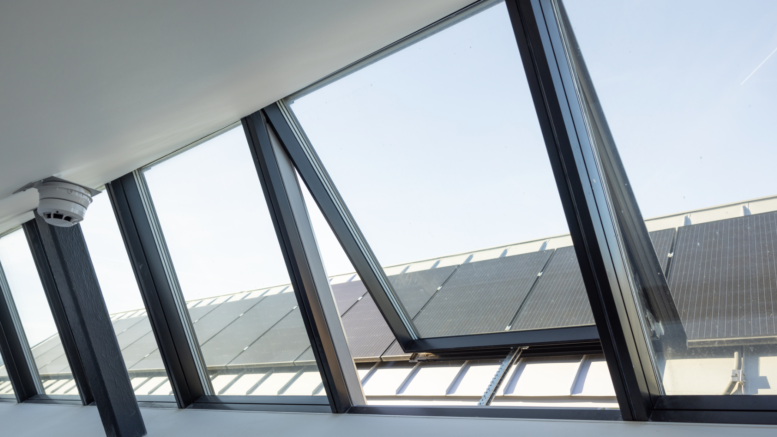

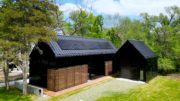
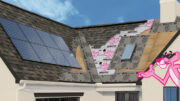
Be the first to comment on "Circle of Light: Maximizing a Roof’s Potential"